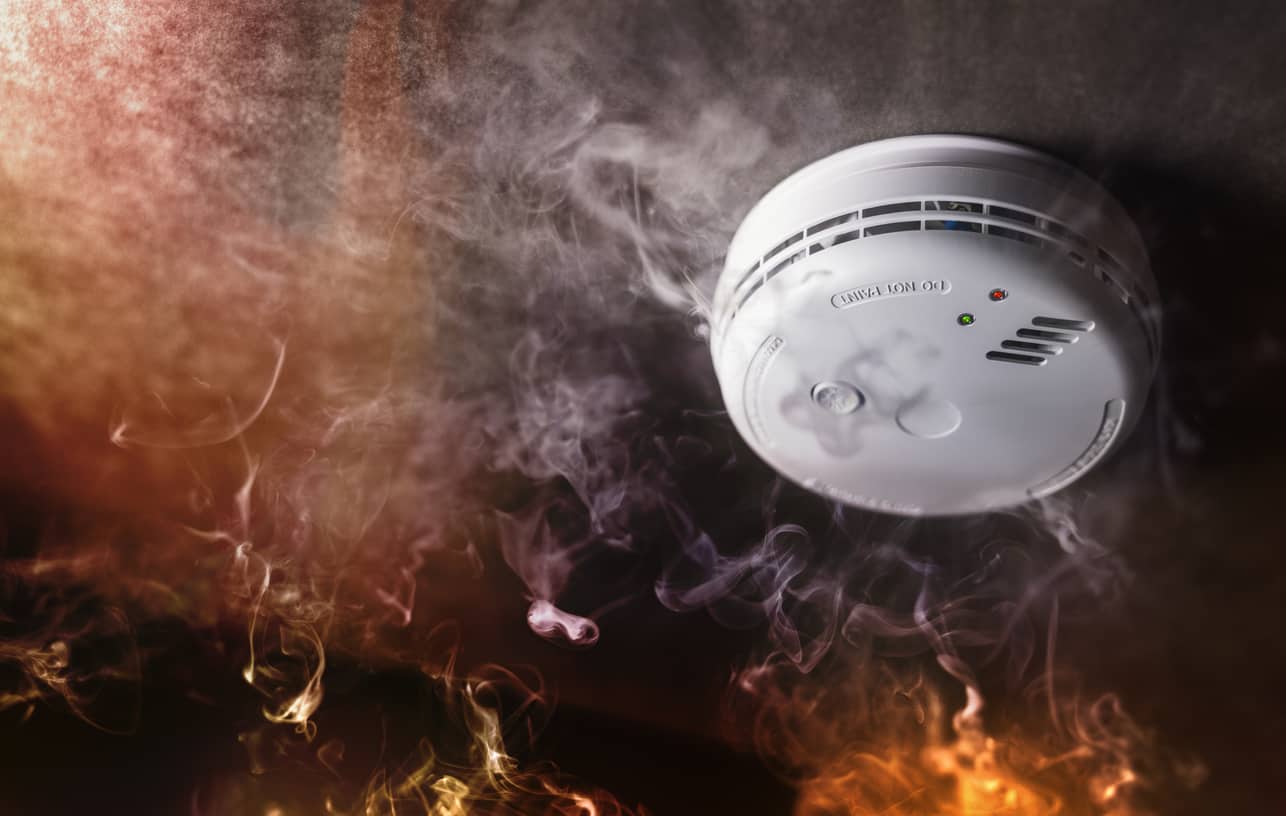A furnace, whether electric or gas, is excellent equipment to keep your house warm during the chilly winters. However, like any other piece of machinery, a furnace is also made up of several spares and auxiliaries. A flame sensor is one such tiny auxiliary in a gas furnace.
A flame sensor, as the name suggests, checks if the flame is burning or not in a gas furnace when it is turned on. But how does the flame sensor work, and why is it so important after all?
In this article, you will have all your questions answered by the HVAC experts at Hurliman Heating. We have years of experience installing and servicing various HVAC systems, including gas furnaces. So, make sure you scroll down to the end to have all your doubts cleared.
What is a flame sensor?
A flame sensor is a critical safety element in a gas furnace heating system. After the thermostat signals for heat, an electronic igniter flames the furnace burners, and your furnace starts heating up the space. The entire onus lies upon the flame sensor to detect if the burners are properly lit and constantly burning throughout the course.
The flame sensor is an electronic sensor that detects a furnace’s flame, i.e., the pilot light, and transmits this information to the furnace’s control board. It is designed to ensure the furnace operates safely and efficiently by cutting down the gas supply if the flame is not present.
The entire gas furnace system can be very hazardous if there isn’t a mechanism to detect if the burners are doing their job properly. If the burner fails to light up or goes off abruptly, the unburnt natural gas can continue flowing into the house. It can pose a severe risk and can even lead to an unpleasant accident such as a fire or explosion.
How does a furnace flame sensor work?
A flame sensor is a metal rod. The metal relies on the small voltage current that flows through it when the burners are lit and burning constantly.
Out into the flame, the flame sensor rods are connected to the furnace control board. The control board keeps track of the current flow on the flame-detecting rod after signaling for the gas valves to open. It produces a little voltage at the flame-detecting terminal, which is wired via the conductor to the sensor.
There will be a voltage at the rod, but no current will flow when there is no flame when the path for the voltage-current to flow is created between the rod and the tiny fractions of ions in the flame. It produces a small microamp direct current. This little DC informs the control board that a flame is lit and burning properly and that everything operates as it should. If it is unable to detect the current within a few seconds, it will cut off the gas supply to the valves and try again.
Right at the start of the sequence, the control board sends out the voltage current on the flame sensors to verify that the current is “open” and flame-free.
With this step, false flame detection is prevented. In other words, it checks for the presence of current passing through the sensors when the flame is not burning.
When the flame is there, and the control board determines that the system is functioning properly, it switches back from zero current to the rated microamp current.
Are flame sensors foolproof?
Flame sensors generally do not break down easily. However, they may fail at times, especially when-
- They short out as a result of an insulator break.
- They are broken; thus, they fail to open.
- They do not conduct properly if they are not correctly positioned in the flame.
- They develop silica (glass) or carbon coatings.
Types of furnace flame sensors
Flame sensors can be divided into optimum readers and bi-metallic strips. Here are the key differences in terms of applicability and functionality.
Optimal readers: Optimal readers are usually used in industry-grade furnaces and boilers. When detecting flames, these sensors generate a slightly higher voltage current. An optical reader’s direct current voltage reading can be between two and five volts.
Bi-metallic strips: Bi-metallic strips also work on the same phenomenon, except that it sends out a much smaller voltage. Flame sensors with Bi-metallic strips are typically seen on household furnaces. When the flame burns in a burner, mili volts of current pass through the metal strips and flame to complete the circuit.
Tips for maintaining furnace flame sensor
Flame sensors do not usually fail or break down easily. However, you can still take note of a few things to ensure that the flame sensor on your gas furnace lasts longer.
- Make sure to inspect and clean the flame sensor regularly. Dirt and dust build-up can interfere with the sensor’s ability to detect the flame, so keep it free of debris.
- Check the sensor’s alignment. The flame sensor should be properly aligned with the furnace’s burner flame. If it’s not, adjust it until it is.
- Ensure that the sensor is properly connected to the furnace. A loose connection can cause the sensor to become damaged or not work properly.
- Replace the sensor if it’s worn out or damaged. It is especially important for older furnaces with less reliable sensors.
- Check for any signs of corrosion on the flame sensor. If the flame sensor is corroded, it may need to be replaced.
- Ensure all wiring connections are secure and use quality connectors to ensure an optimal connection. The flame sensor may not work properly if the wiring is loose or frayed.
- Schedule Professional Maintenance. Having a professional HVAC technician come out and inspect your furnace’s flame sensor is essential for proper maintenance and to ensure the sensor is functioning correctly.
Not sure if your flame sensor is working correctly? Give us a call!
Without a flame sensor, a gas furnace is a highly unreliable and hazardous tool that can even lead to fire breakouts and explosions. In fact, a broken or malfunctioning flame sensor can also lead to the same situation. Therefore, it becomes imperative for you to keep it in the optimal state. And the best way to keep your flame sensor in an optimal state is to have an HVAC expert at Hurliman check it.Not only do the professionals at Hurliman Heating provide prompt installation and maintenance services, but we also ensure that the problem is fixed once and for all. So, whether your furnace is acting up or broken down, call Hurliman Heating and get it fixed in no time!






